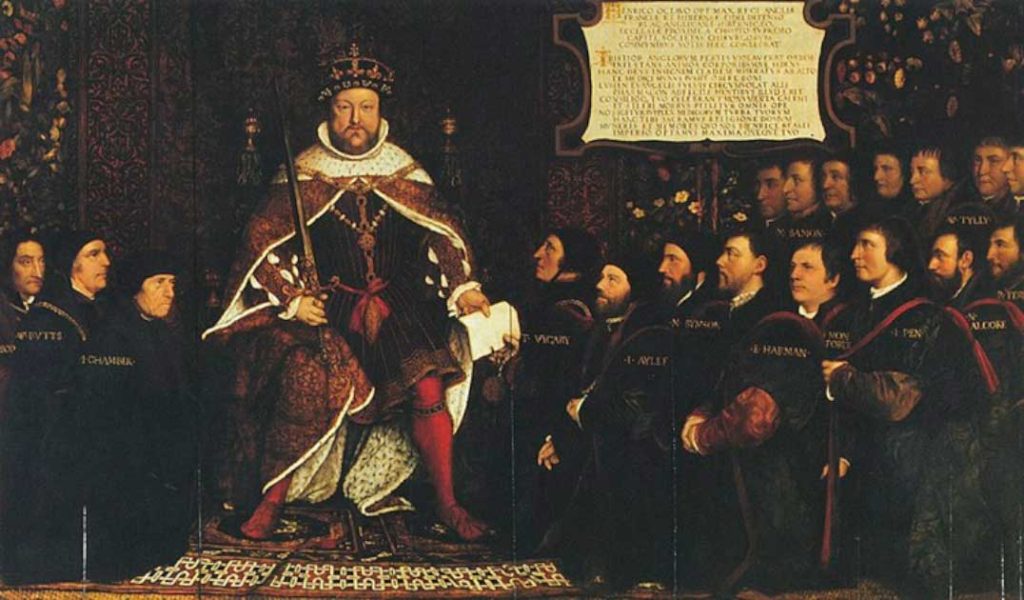Richard Roose may just have been the unluckiest cook in English history. When in 1531 Roose attempted to pull a prank by spiking his master’s food it set in motion a chain of events that would change the course of English history forever.
His actions resulted in a whole host of conspiracy theories that historians argue over to this day. So who was Richard Roose and how did he make that most unstable of monarchs, Henry VIII, change the law?
Richard Roose
Not much is known about Richard Roose besides his profession. He served as a cook to the Bishop of Rochester, John Fisher during the reign of King Henry VIII. This was significant because Fisher was widely regarded as one of the most learned theologians in the world at the time, and had once been a significant ally of Henry VIII.
On the 18th of February 1531, Roose cooked a large meal for Fisher, catering for around sixteen guests, as well as the beggars who tended to gather at Fisher’s home for alms. All of them became severely ill not long afterward and two, a man named Curen and a widow, Alice Tryppt, died.
It was declared that the soup they had all been served by Roose had been poisoned. The only person not made ill by the soup was Fisher himself who had chosen not to dine for some unknown reason.
The fact that a high-profile enemy of the King had almost been poisoned became big news. Fisher had supported Catherine of Aragorn, Henry’s first wife, when he had decided he wanted a divorce so he could be free to marry Anne Boleyn. The matter was so important in fact that the King himself became personally involved in the case.
Changes to the Law
The poisoning at Fisher’s residence had dire consequences for Roose. He was put on the rack and tortured until he admitted that he had indeed poisoned the soup. He claimed it had been a mere prank, meant to make the diners ill and evacuate their bowels, nothing more.

King Henry, however, was having none of it. He wanted to ensure that Roose faced as severe a punishment as possible. Two people were dead and Henry was unwilling to settle for a manslaughter or even a murder charge, he wanted something more.
- The Witch-Queen of England? Revisiting Anne Boleyn’s Guilt
- The Pimlico Poisoning Mystery: Adelaide Bartlett’s Perfect Crime?
The only crime worse than murder was treason. The only problem? Roose hadn’t committed treason. The solution was simple if you were Henry VIII: change the meaning of treason of course! Soon after Roose’s confession, Henry had two of his councilors write a bill that expanded the definition of treason.
The bill was dubbed An Acte for Poysonyng and passed through both houses of parliament with ease. The bill essentially added eleven new crimes under the charge of “treason”. It is believed the bill passed through Parliament so easily because Parliament was happy to have a law that made it so easy to strike down any potential enemies.
The big takeaway though is that the new bill made murder by poisoning an act of treason. Murder by poisoning, no matter the status of the victim, was from that point onwards treated as high treason. The punishment? Death by boiling. Anyone found guilty was to be boiled alive without what was known as “the benefit of the clergy”.
So why did Henry move so quickly to make sure that Roose faced the maximum penalty possible? He didn’t even like or agree with Fisher. His life would arguably have been easier if Fisher had eaten the poisoned soup.
Lots of conspiracy theories began to float around. Some historians have claimed that Henry used Roose as an excuse to clamp down on potential threats in the future. Part of the changes he made to the laws surrounding treason was to clamp down on this benefit of the clergy.
Essentially, before the new act, the clergy could demand to be tried in a much more lenient ecclesiastical court rather than a common law court. Henry’s changes meant this couldn’t happen anymore in cases of treason or murder.
Many people suspected Henry himself had paid Roose to poison the food. It was well known Henry was no longer a fan of Fisher and people suspected that Henry wanted him dead. These people suspected that Henry’s harsh treatment of Roose was simply an effort to get rid of a smoking gun before Roose could implicate the King.
Others believed it was Anne Boleyn’s family who wanted Fisher dead. This theory revolves around the idea that it was her family who paid Roose to poison Fisher. Henry’s harsh treatment of Roose was supposedly an attempt to protect Boleyn and her family from any potential confession Roose might make.
- Death by a Thousand Spikes: Was the Iron Maiden Ever Real?
- The Tavora Executions: An Entire Noble Family Put to the Sword
Finally, it was also well known that Henry was incredibly paranoid about poisoning in general. Despite the fact poisonings in England at the time were incredibly rare, Henry had a phobia of being poisoned. Some people simply believe Henry went so far with Roose simply because poisoners held a particular place in the King’s heart.
The Execution of Roose
Surprising no one, Roose was quickly found guilty of treason. Roose didn’t receive a trial, he was simply served an attainder (judgment without trial) that stated he was guilty. His sentence was carried out in a district of London called Smithfield on April 15th, 1532.

Roose was chained up and tied to a mechanism that dunked him into a pot of boiling water three times over a period of roughly two hours. It was a brutal, drawn-out death that many spectators found uncomfortable to watch.
Roose wasn’t the first person to suffer this form of execution but it was thanks to him that it was put in the statute book as a valid form of execution. An unfortunate claim to fame to be sure, and a truly agonizing way to go.
This form of execution was extremely brutal but was chosen for a reason. It was meant to re-enact the crime of poisoning itself. Roose had taken the time to add the poison to his food, stirring it while it boiled and cooked. As such, Roose, a supposedly poisonous element of society, was added to his very own broth.
Historians to this day still disagree over why Roose did what he did and why the crown decided to treat him so harshly. Was Roose really just an idiot whose prank went wrong? We don’t know much about Roose outside of his ultimate fate but it’s hard to believe that the deadly poisoning was simply a prank gone wrong.
If Roose had been paid to add the poison then he was a particular inept assassin. In any case where death is caused by poisoning the chef is always going to be the primary suspect. Unless perhaps Roose was tricked? An unwitting accomplice to the machinations of either the crown or the Boleyn family.
In the end, we’ll never know and the mystery as to why Roose was so harshly treated will likely stay unsolved. Whatever the truth, the fact is Roose’s death marked a turning point in Henry’s reign. The King had discovered just how potent the threat of execution could be. Over the remainder of his reign, an almost unbelievable 72,000 executions were carried out.
Top Image: Being boiled alive is one of the most painful methods of execution, and Henry VIII specifically changed the law to ensure Richard Roose would suffer this fate. Source: Stefan Lochner / CC BY-SA 4.0.